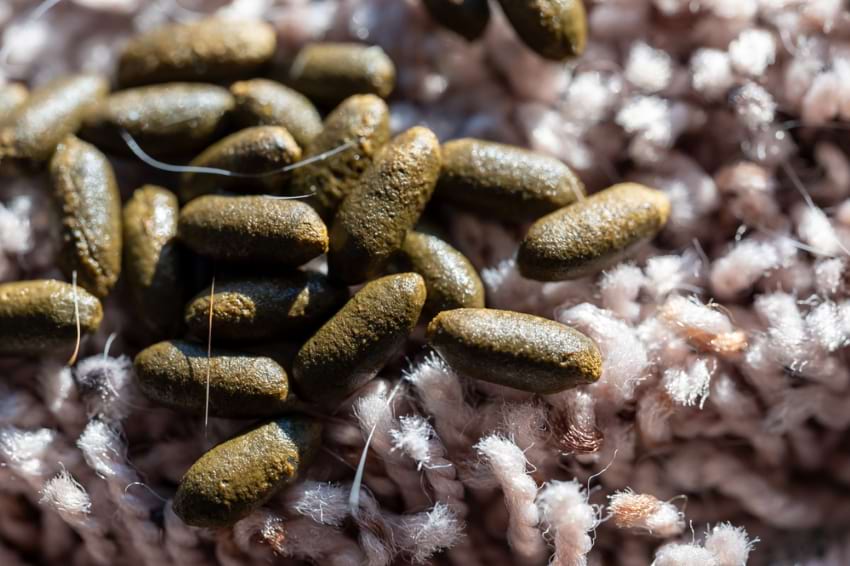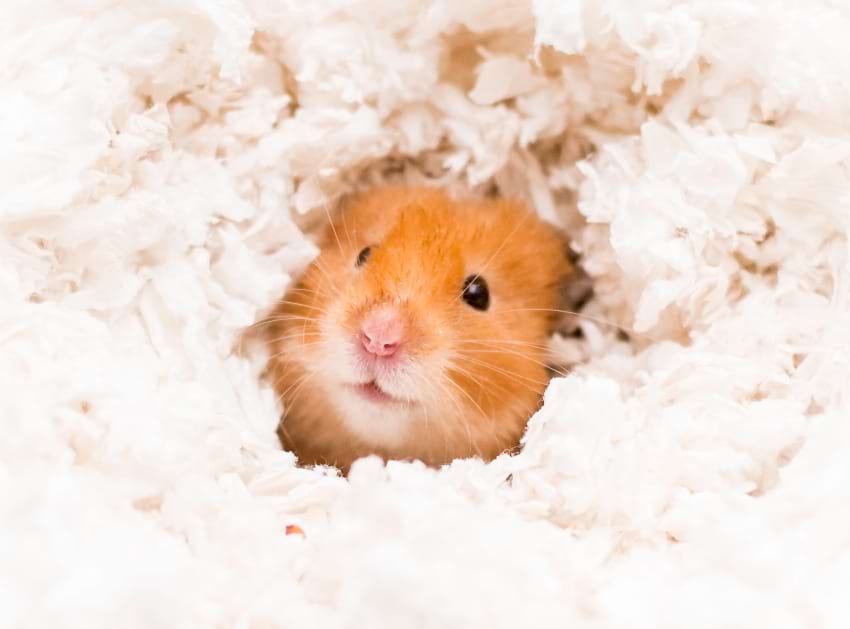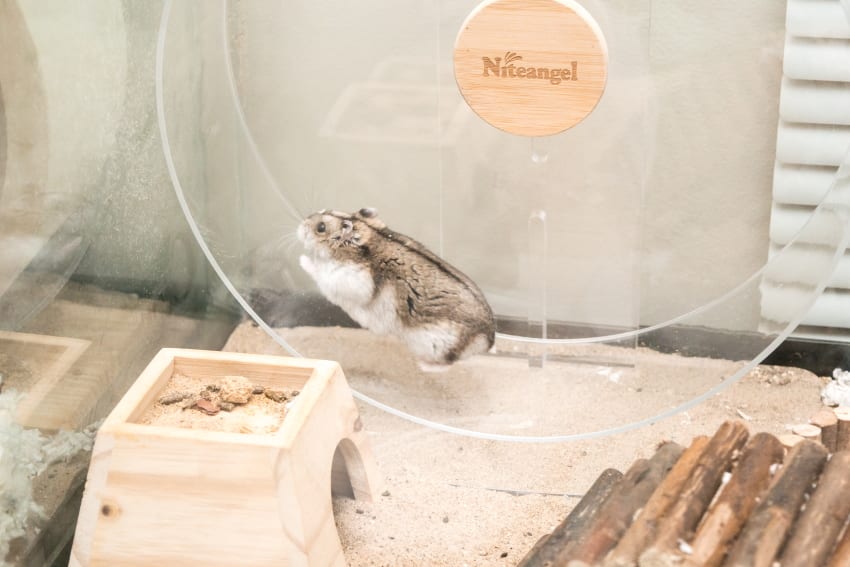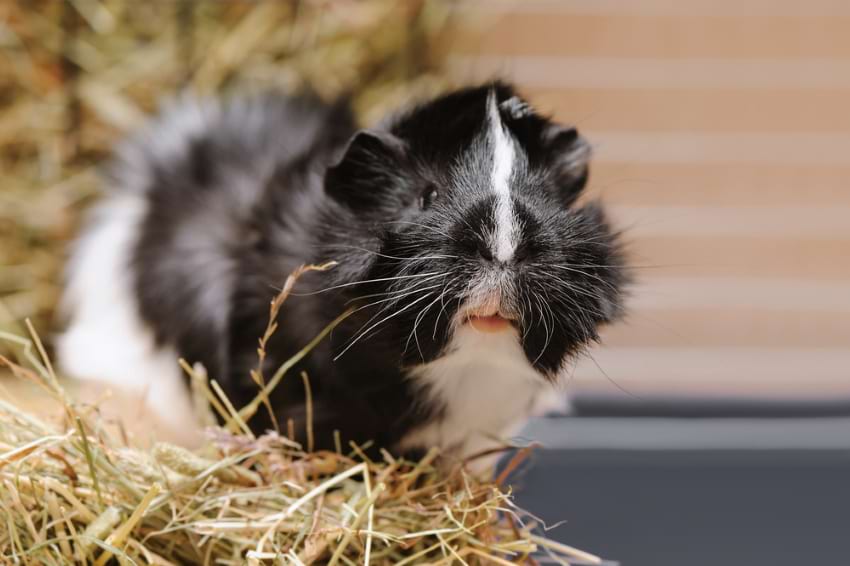Which is a Better Pet for You?

Are you thinking of getting a new pet? Choosing between guinea pigs vs hamsters can be very difficult, but we’re here to help you decide which is a better pet for you.
Hamsters are solitary animals that must be caged alone, while guinea pigs are social animals that cannot be housed alone. Hamsters require plenty of space, but not as much as guinea pigs, and tend to need less food, less grooming, and fewer cage cleans. Guinea pigs tend to be more expensive pets.
In this article, we’ll discuss the differences between hamsters and guinea pigs to help you decide which, if either, you’d like to adopt!
Guinea Pigs Require More Space
Cages sold in pet stores for both species are nearly always too small. The minimum cage size for hamsters is 5.4 square feet (775 square inches).
Guinea pigs need nearly double the space with the minimum cage size being 7.5 square feet, and the ideal size being 10.5 square feet. If you want more than two guinea pigs, they’ll need an even larger enclosure.
For both hamsters and guinea pigs, bigger is better! You should purchase the largest enclosure you can afford and have space for. Please never keep your pet in a cage that won’t meet their minimum care needs.
Guinea Pigs Are Messier

Guinea pigs are estimated to poop up to 100 times a day! They also pee frequently and have very fast digestive systems, hence their need to be eating constantly.
This means that their cages must be cleaned often to keep up with their mess. They should be spot cleaned at least once a day, and deep cleaned at least once a week.
Hamsters are desert animals, so they don’t tend to pee nearly as much as guinea pigs. They also don’t poop nearly as much. As a result, their cages don’t need to be cleaned as often.
Guinea Pigs Cannot Be Safely Kept in Glass Enclosures
While the ideal setup for a hamster is typically a large glass enclosure, these setups don’t provide enough space or ventilation for guinea pigs. Piggies tend to poop and pee in higher quantities, leading to ammonia build-up.
They’re also prone to respiratory infections and can develop deadly illnesses when housed in glass enclosures.
The tops of their cages should be open or fully gridded, and the sides should also have plenty of ventilation such as what you’d see in a C&C cage.
Hamsters need ventilation too, just less of it. The amount of ventilation depends on the size of your cage but they should ideally have at least one vent on each side.
Hamsters Need to Burrow

Hamsters require 10-12 inches of bedding so that they can burrow, which is a natural and instinctive activity for them.
Guinea pigs don’t require deep bedding for burrowing, though they do enjoy burrowing in their hay piles and sometimes beneath fleece bedding. Disposable bedding for guinea pigs should be just 2-3 inches deep to properly absorb their urine, and many people house their guinea pigs on fleece liners or bath mats.
Guinea Pigs Don’t Escape Enclosures as Often
Guinea pigs are larger animals and don’t climb well. It’s not as common for them to escape their enclosure as it is for hamsters, though it can happen, especially with improper setups.
The most common reason for guinea pigs to escape is if intact males are kept near females. The sows’ scents can make a boar desperate to get out of the cage to mate, and they’ve been known to climb a whole C&C grid to do so!
Hamster cages should have secure lids and there should be no holes or grids large enough for them to squeeze through. Giving your hamster a large cage of at least 775 square inches (5.4 square feet) with plenty of enrichment will also lessen their desire to escape.
They Require Different Diets
Guinea pigs need constant access to fresh hay, a cup of mixed vegetables a day, and a small amount of quality guinea pig pellets. They should not be fed seeds or nuts.
Hamsters should be fed a dry food mix, dried forage, and a tiny serving of fresh vegetables daily.
There are unsafe foods sold in pet stores for both animals, so it’s important to do your own research and look at the ingredients list before purchasing. Your veterinarian can give you good advice if you’re unsure of what to feed your pet.
Wheels Are Unsafe for Guinea Pigs

Hamsters require large wheels in their cages. They can run up to five miles each night and wheels help them to get out this energy.
Guinea pigs can hurt their backs or overheat if allowed to run on wheels. They only require plenty of floor space to run around in.
Guinea Pigs Are Calmer
Hamsters tend to move very quickly and this, combined with their small size, can make handling difficult. If you want a pet who will sit still in your lap, you’re much more likely to find this with guinea pigs.
That said, piggies can still be very skittish and some won’t like to cuddle. Most dislike being picked up and it’s important to learn how to handle them properly.
Hamsters Are Solitary While Guinea Pigs Are Herd Animals

Most hamster species, including Syrian and Chinese hamsters, are completely solitary and should not be housed together. They are very territorial animals and will often fight to the death if allowed.
Guinea pigs, on the other hand, should never be housed alone. They can be housed in pairs or groups. Males do best in pairs or with one male housed with several females. Females can be kept in any number so long as they have enough space and are properly bonded.
Guinea Pigs Are More Expensive
Guinea pigs tend to be more expensive compared to hamsters. Their food costs are higher because they’re larger and eat constantly.
They also have larger cages that need to be cleaned frequently. If you use disposable bedding, you’ll need to replace it much more often than you would for a hamster. Reusable bedding such as fleece liners can significantly reduce your budget.
Based on our calculations, monthly costs of keeping two guinea pigs can range from $75-$270+, while monthly costs of a hamster usually stretch between $30 and $175.
Guinea pigs also live longer than hamsters, meaning their lifetime costs are also higher.
Hamsters Are Nocturnal

If you want a pet that you can bond with during the day, guinea pigs are the better option. Hamsters sleep during the day and are most active at night.
You never want to disturb your hamster’s sleep unless it’s necessary, such as for a vet trip.
Guinea pigs are crepuscular, meaning they’re most active at dawn and dusk. They also don’t sleep for long durations, preferring to get their 4-6 hours of daily sleep in short naps of 30 minutes or less.
Both animals tend to be good for those who work during the day since they’ll be at their most active before you leave or after you get home.
Guinea Pigs Live Longer
Guinea pigs have average lifespans of five to seven years, with some living up to ten years old! Hamsters tend to live for around two years.
Personally, I prefer to keep guinea pigs since they’re long-lived for a pet rodent, and the death of a pet is always heartbreaking.
Others prefer hamsters since they require less commitment, and you don’t need to worry about where you’ll be in life five or more years from now.
Hamsters Are More Likely to Bite
Guinea pigs rarely bite people, though it’s important to remember that any animal with teeth can bite if provoked. They’re known for being docile.
Hamsters are more known for their biting, though most hamsters won’t bite if they’re cared for properly! Small enclosures and poor handling are two of the top causes of biting in hamsters.
Guinea Pigs Are Louder

Hamsters make a little bit of noise, mostly when running on their wheels. They don’t tend to vocalize often.
Guinea pigs have loud squeaks–mine used to wake me up in the mornings when they heard others opening the fridge or the sound of rustling plastic, which they associated with food.
They tend to be pretty vocal toward their cage mates and their humans. Some guinea pigs are very quiet while others are extra chatty!
They also make more noise when running around their cage since they’re larger than hamsters.
Hamsters Require Less Grooming
Guinea pigs require monthly nail trims, while hamsters tend to maintain their own nails. You’ll only need to trim them occasionally if they become overgrown.
Longhaired guinea pigs and hamsters should be brushed routinely and their fur should be trimmed to keep it tidy.
Hamsters use sand baths to keep themselves clean, while guinea pigs groom themselves with their tongues. Neither need regular baths, but guinea pigs will sometimes get dirty bums that require a bath in the sink.
Are Guinea Pigs or Hamsters Better Pets?
Both guinea pigs and hamsters can make awesome pets, but which is better for you depends on your lifestyle.
These animals are best suited for adult caretakers who can look after their health, clean their cages regularly, and handle them with care.
Hamsters are great for people who like to spend time with their pets late at night, who don’t want to deal with routine grooming, and who want quieter, cleaner animals.
Guinea pigs are best for people who want a calm, docile pet with a longer lifespan. They do require more money, space, and time.
If you only want one pet, you’ll need to get a hamster since guinea pigs should never be housed alone. If you want more than one pet in the same cage, guinea pigs are the way to go!



